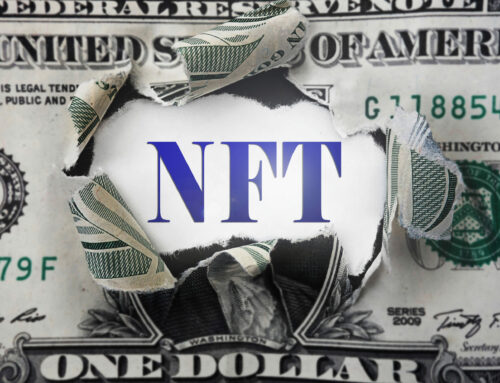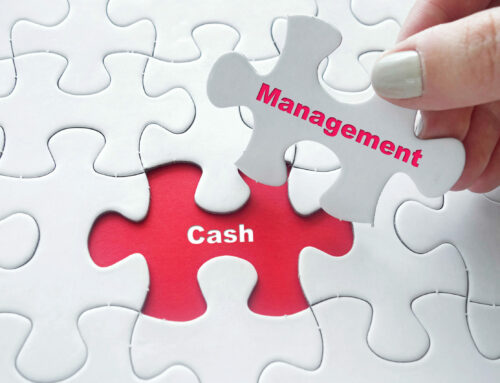A successful exit often literally makes the difference between prosperity and spoilage in real estate development. Reason enough to concern itself with the question what real estate developers can do, in order to optimize their exit.
- Define the target group
The next steps depend on the defined target group, so this step should be the first. Which buyers are suitable as target groups for an exit depends on many factors, some of which can also change. Let's take a look at the typical target groups of a large residential construction project as an example:
-
- Private home buyers (own use)
- Buyers of provision apartments
- Family Offices
- Foundations
- Insurance companies
- Open real estate funds
Theoretically, institutional investors with a short-term orientation could still be considered for investments during the project. Since this is essentially a financing topic and we have already discussed it in the blog post of 3.9.2020, we will not consider this group in the following.
For the selection of the target group the following questions seem to be appropriate (interpretation in brackets):
-
- Is the investment volume sufficiently large to be interesting for all potential target groups? (for an insurance company or a real estate fund, the purchase of only a few units is not exciting. Conversely, individual investments of 100 million and more can only be placed with very few family offices/foundations)
- Is the product a "luxury product"? (luxury can be sold outside the hotel segment almost only to private individuals for their own use)
- Can the investor alone decide on the property after the purchase or are there legal side conditions? (Family offices and foundations usually do not want to be tenants)
- Do we talk about leasehold or ownership? (Leasehold instead of ownership can be an exclusion criterion for any type of investor, but this is particularly common with family offices and foundations)
- How complex is the ongoing management for the investor? (a costly ongoing management is often an exclusion criterion for foundations but also for funds without local representation)
- As a company, do I have the administrative/sales capacity to handle individual sales? (depending on the complexity of the product and the quality of the sales partners, experience shows that at least 3-4 calls per unit to be sold must be conducted directly by the developer)
- As a company, do I have the technical/administrative capacities to survive a technical due diligence or even a running construction supervision by an institutional investor without major scratches? (in contrast to the sale to private individuals, the sale to institutional investors involves a great deal of consultation and information provision, especially with regard to the technical aspects of the property)
In my experience, after answering the above questions, there are usually only 2 target groups left on which you should focus.
- Define the product
Flexibility in negotiation can often turn out to be an advantage, but the basic offer should be clearly defined.
In the private segment this is still relatively easy. The product "flat" is relatively clear, the rules of the game of floor space measurement are defined in the WEG. The BTVG is favorable for the developer and generally accepted by private home buyers.
However, things are more complicated when selling to institutional investors.
In this case, the object of purchase must first be clarified (asset vs. share deal). In case of a share deal the legal form of the company and the jurisdiction attached need to be defined as well.
Moreover, in the case of share deals with large margins, the question of who bears the disadvantage of the deferred tax must often also be clarified, since the intangible asset in the holding company is not depreciated.
Similarly, in the case of a sale during the construction phase, it must also be clarified whether the sale is merely a forward deal or whether forward funding should also be provided before the handover.
Depending on the product, transfer dates, collateral, co-determination and inspection rights during the construction phase must be defined.
All in all, the product definition is therefore much more laborious when dealing with institutional investors and this step should definitely be taken at an early stage.
- Set preparatory measures
This includes measures regarding the project as well as regarding the developer. The investor shall have the feeling that he acquires a great project from a great developer. In particular smaller real estate developers, who sell to a larger investor for the first time are confronted with numerous questions. In my experience, the most frequently requested documents include an IFRS financial statement of the developer (mainly to assess the value of guarantees given) and a green building/sustainability report at project and/or holding level.
In view of the fact that such reports often include comparative values from the previous year and the underlying values must be measured live on a regular basis, an early start is called for.
- Start marketing early
As soon as the product and the target group are clarified, marketing can begin. The first step is usually the creation of an investment proposal adapted to the target group, which is a mix of images, technical and legal product information and, classically, a sample calculation from the investor's point of view. It is recommended to have the sample calculation checked for plausibility and mathematical accuracy by a renowned auditor and to communicate this in the brochure.
The first phase also includes the creation of high-quality visualizations and the creation of slogans and core messages.
The next step is to present the project, its environment and last but not least the seller in a good way. The channels for this include the web presence per se, activities in the various social media, print and online advertising, posters if necessary and professional PR work, which leads to advantageous editorial contributions.
As a numbers guy, I am always in favor of thrifty business, but marketing is often under-budgeted and, honestly, savings are made in the wrong places here.
Frequently, a 3% price increase through a good market presence does not seem impossible. For example, the sale of 200 apartments at EUR 300,000 would result in an (additional) marketing budget of EUR 1.8 million.
- Select the right sales partner
In the course of selecting a sales partner, the following questions arise from the developer's point of view:
-
- What part of the sales work do I pass on to the sales partner(s)? (when selling a simple product to private individuals, a good sales partner can theoretically conduct all discussions until the contract is signed, whereas with very complex products his role is often reduced to the mere initiation of contact)
- Does the product have special features (such as a building lease, a certain region, etc.) that require special knowledge / explanations? (the more complex the product, the fewer sales partners are considered)
- How many sales partners can or do I want to support? (in case of support bottlenecks, a lead broker concept can make sense)
- Do I want to allow the broker to collect commission on the buyer's side and if so how much?
Depending on the answer to these questions, fundamental decisions regarding the sales structure have to be made first. The concrete selection of the sales partners is done in the second step.
Even if one should always be careful with blanket statements, I maintain that only extreme models almost always work here. Either the broker is reduced to a tipster role or a very close cooperation is established with a corresponding bonus agreement related to the sales result.
- Prepare investor meetings well
This point is particularly important for sales to institutional investors and should include at least the following points:
-
- Analysis of the current rental returns achieved by the investor as well as his real management/liquidity costs - a glance at the last annual financial statements is often sufficient for this
- Analysis of important personal decision factors - it should have already happened that the fund manager had to place a certain volume in the last weeks of the year in order to receive his bonus. You better know as seller...
- During the discussions, the impression should never be created that the selling company depends on only one decision-maker. I am almost certain that no negotiating partner wishes something bad for his counterpart. It is however understandable that he wants to secure his investment if his counterpart suddenly fails. This last point is often a challenge, especially for owner-managed companies.
- Speaking about timing
The last point is the timing of the transaction. As already described, the preparatory work should be started as early as possible.
For single unit sales to private individuals, the rule of thumb is: 30% should be sold quasi at the start of construction, 80% at completion.
In the case of a sale to institutional investors, the closing should take place about 12 months before the completion of construction. By this time, major risks (approval, financing, awarding of contracts) have already been processed and the "forward deal premium" demanded by the investor has fallen accordingly.
As with all rules of thumb, exceptions certainly confirm the rule....






Hi gregor-pfeiffer.at admin, Thanks for the well-researched post!
vypr vpn buy best free vpn for dark web one time buy vpn https://free-vpn-proxy.com/
vypr vpn buy best free vpn for dark web one time buy vpn best vpn for windows 2018
buy netgear vpn client how to get a vpn buy uk
vpn https://freevpnconnection.com/
buy netgear vpn client how to get a vpn buy uk vpn the best vpn for windows 10
vpn browser free free vpn account vpn blocker free https://shiva-vpn.com/
vpn browser free free vpn account vpn blocker free sonicwall vpn client
free avast vpn license key best free pc vpn free safe vpn https://rsvpnorthvalley.com/
free avast vpn license key best free pc vpn free safe vpn the best vpn for windows 10
best free vpn for utorrent best vpn for usa best anonymous vpn https://ippowervpn.net/
best free vpn for utorrent best vpn for usa best anonymous vpn free vpn for macbook
business vpn software is vpn free best vpn for windows https://superfreevpn.net/
business vpn software is vpn free best vpn for windows free vpn list
free vpn for macbook avast secure vpn vpn configuration windows
free https://imfreevpn.net/
free vpn for macbook avast secure vpn vpn configuration windows free best vpn location for netflix
best buy vpn router nord vpn free trial free vpn proxy
video https://accountingvpn.com/
best buy vpn router nord vpn free trial free vpn proxy video incognito vpn
free vpn no download free vpn reviews best vpn protocols https://bordervpn.com/
free vpn no download free vpn reviews best vpn protocols best vpn service for china
best vpn service providers best vpn service of 2022 best vpn for windows free https://govtvpn.com/
best vpn service providers best vpn service of 2022 best vpn for windows free vpn for firefox
free mac vpn best vpn services 2022 free vpn app https://courtvpn.com/
free mac vpn best vpn services 2022 free vpn app free vpn canada
Hello gregor-pfeiffer.at webmaster, You always provide in-depth analysis and understanding.
To the gregor-pfeiffer.at administrator, Thanks for the well-written and informative post!
To the gregor-pfeiffer.at webmaster, Your posts are always well written.
Dear gregor-pfeiffer.at administrator, Your posts are always well-written and engaging.
Hi gregor-pfeiffer.at owner, Great content!
Dear gregor-pfeiffer.at owner, Thanks for the detailed post!
Hello gregor-pfeiffer.at administrator, You always provide great examples and real-world applications, thank you for your valuable contributions.
To the gregor-pfeiffer.at webmaster, Thanks for the valuable information!
Hello gregor-pfeiffer.at owner, Your posts are always well-supported by research and data.
Dear gregor-pfeiffer.at admin, Thanks for the well written post!
To the gregor-pfeiffer.at owner, Your posts are always thought-provoking and inspiring.
%random_anchor_text% %random_anchor_text% %random_anchor_text% https://customessaywwriting.com/
%random_anchor_text% %random_anchor_text% %random_anchor_text% .
Hello gregor-pfeiffer.at administrator, Your posts are always well thought out.
To the gregor-pfeiffer.at administrator, Your posts are always well researched and well written.
Dear gregor-pfeiffer.at owner, Keep up the good work!
bondage dating sites single senior dating sites
free hookup websites near me https://freewebdating.net/
bondage dating sites single senior dating sites free hookup
websites near me free single personal ads
totally free dating sites local dating free online date women free https://onlinedatingsurvey.com/
totally free dating sites local dating free online date women free free online chat
christian dating for free dating free site online online
chatting sites https://jewish-dating-online.net/
christian dating for free dating free site online online chatting sites free disabled dating
meet women at zushi beach single woman dating for free single
date online https://onlinedatingsuccessguide.com/
meet women at zushi beach single woman dating for free
single date online onlinedatingsuccessguide.com
plenty of fish dating positive single free dating chat https://onlinedatinghunks.com/
plenty of fish dating positive single free dating chat free free dating sites
plenty of fish dating positive single free dating chat free free dating sites
free free dating sites local dating sites free free dating near you https://allaboutdatingsites.com/
free free dating sites local dating sites free free dating
near you date sites free
To the gregor-pfeiffer.at webmaster, Good job!
Hello gregor-pfeiffer.at admin, You always provide clear explanations and step-by-step instructions.
To the gregor-pfeiffer.at webmaster, You always provide useful tips and best practices.
Hi gregor-pfeiffer.at webmaster, Your posts are always well organized and easy to understand.
coursework writing service uk coursework in academic writing
coursework umich stats https://coursework-expert.com/
coursework writing service uk coursework in academic writing coursework umich stats coursework masters
Hi gregor-pfeiffer.at admin, Your posts are always informative and well-explained.
coursework and research help with coursework coursework for business administration https://writingacoursework.com/
coursework and research help with coursework coursework for
business administration coursework history a level
coursework resume example coursework rule usyd coursework to order https://courseworkinfotest.com/
coursework resume example coursework rule usyd coursework
to order coursework service
coursework translate coursework hours course workload https://buycoursework.org/
coursework translate coursework hours course workload coursework report example
narrative coursework examples coursework online coursework noun https://courseworkdownloads.com/
narrative coursework examples coursework online
coursework noun qasp coursework
quantitative coursework coursework hours database coursework coursework jamii forum
coursework masters vs research masters coursework masters coursework jcq https://courseworkninja.com/
coursework masters vs research masters coursework masters coursework
jcq coursework based